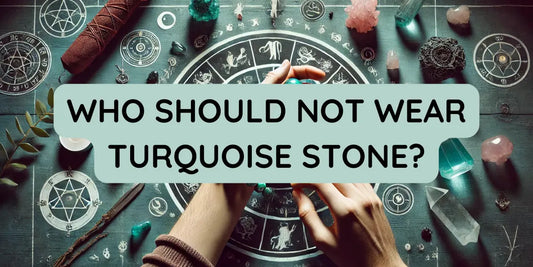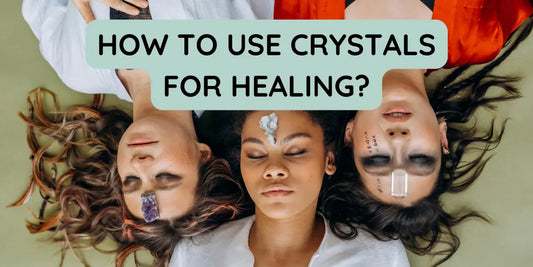The mystical allure of natural stones has captivated humanity for centuries, not only for their physical beauty but also for their energetic properties. In the realm of lithotherapy, these stones are believed to emit and absorb energy, influencing our emotional and spiritual states. While much has been discussed about the benefits and uses of stones, one crucial factor often overlooked is the role of light. Light, whether natural or artificial, profoundly affects the properties, appearance, and energetic potential of crystals and gemstones. Understanding this relationship is key to maximizing the benefits of natural stones in your daily life.

Table of contents
The Relationship Between Light and Natural Stones
The Science Behind Light and Stones
The Effects of Natural Light on Stones
The Role of Artificial Light
Practical Tips for Using Light with Stones
Conclusion
The Relationship Between Light and Natural Stones
Natural stones, by their very nature, are deeply connected to the elements. Formed over millions of years in the earth’s crust, they carry the energy of heat, pressure, and minerals. Light, as a form of energy, interacts uniquely with each stone depending on its composition, color, and structure. This interaction not only alters the stone's visual appeal but also impacts its metaphysical properties, making light an integral part of the lithotherapy experience.

Why Light Matters
The energy emitted by light interacts with the atomic structure of crystals, causing vibrations at specific frequencies. These frequencies can enhance the healing properties of stones, activating their ability to absorb or deflect energies. For example:
- Sunlight enhances stones associated with energy and vitality, such as citrine and tiger’s eye.
- Moonlight amplifies the intuitive and calming properties of stones like amethyst and moonstone.
The Science Behind Light and Stones
From a scientific perspective, light interacts with stones through a phenomenon called light absorption and reflection. Natural stones are composed of minerals, and their internal lattice structures determine how they interact with different wavelengths of light. These interactions influence not only the color of the stone but also its energetic output.

How Colors Influence Energy
The color of a stone is directly related to the light it absorbs and reflects. For instance:
- Red stones like garnet absorb higher frequencies of light, which is why they are associated with grounding and passion.
- Blue stones like lapis lazuli reflect cooler light wavelengths, linking them to calmness and communication.
The relationship between color and light is pivotal in lithotherapy. When exposed to light, these stones become more potent, with their colors acting as a medium to channel energy into our auric field.
Light Refraction and Clarity
Another critical factor is light refraction, which affects the clarity and brilliance of stones. Clear crystals like quartz and selenite refract light in a way that creates a sense of clarity and purification. This makes them ideal for energy cleansing and amplification in spiritual practices.
The Effects of Natural Light on Stones
Natural light, particularly sunlight and moonlight, plays a significant role in influencing the properties of stones. These two sources of light differ in intensity, spectrum, and energy, thereby affecting stones in distinct ways.

Sunlight and Its Impact
Sunlight, as a source of high-energy light waves, has both positive and negative effects on stones. Its energy is dynamic, and it works best with stones that symbolize action, strength, and vitality.
- Positive Effects:Sunlight charges stones like citrine, tiger’s eye, and carnelian, enhancing their properties of motivation and confidence. The sunlight’s warmth activates these stones, making them excellent tools for improving focus and energy levels.
- Negative Effects:Prolonged exposure to direct sunlight can fade the color of sensitive stones like amethyst and fluorite. The intense UV rays break down the molecular bonds in these stones, diminishing their energetic potency and aesthetic appeal.

Moonlight and Its Impact
In contrast to sunlight, moonlight is softer and more subtle, embodying a calming and intuitive energy. Stones exposed to moonlight absorb this gentle vibration, which amplifies their spiritual and emotional healing properties.
- Positive Effects:Moonlight is ideal for charging stones like moonstone, selenite, and opal, as it aligns with their natural frequency. It enhances their connection to intuition, psychic awareness, and emotional balance. Exposing stones to moonlight during a full moon is particularly powerful in lithotherapy.
- Negative Effects:While rare, excessive exposure to moonlight can sometimes overcharge stones, making their energy feel overwhelming. This is why proper timing during moon phases is crucial.
The Role of Artificial Light
Artificial light, though less potent than natural light, also affects stones in specific ways. Many people use artificial light to showcase their stones in homes, stores, or meditation spaces. However, the spectrum of artificial light differs significantly from natural sources, leading to varying effects.

LED vs. Incandescent Light
- LED Light:LED light, being cool and energy-efficient, is less likely to damage stones. However, it may not charge them effectively for energetic purposes.
- Incandescent Light:Incandescent bulbs emit warm light, which can bring out the depth of certain stones like amber and carnelian. However, prolonged exposure may cause overheating, particularly in sensitive stones.
Artificial light is best used for aesthetic purposes rather than energy work, as it lacks the natural frequency needed to fully activate stones.
Practical Tips for Using Light with Stones

Understanding how light interacts with your stones allows you to harness its energy more effectively. Here are some practical tips:
- Rotate Light Sources:To prevent damage or overcharging, alternate between sunlight and moonlight when charging your stones. For instance, expose amethyst to moonlight instead of sunlight to preserve its vibrant purple hue.
- Monitor Duration:Limit exposure time to avoid overcharging or fading. For sunlight, an hour or two is sufficient, while moonlight can be extended overnight during a full moon.
- Create a Charging Ritual:Incorporate light into your stone-cleaning ritual. After cleansing your stones with water or sage, place them in the desired light source to recharge their energy.
- Use Light Safely Indoors:When displaying stones indoors, opt for LED lights that highlight their beauty without damaging their properties.
- Choose Stones for Specific Light:Pair stones with the right light source based on their properties. For example, use sunlight to activate citrine for abundance or moonlight to enhance the calming energy of moonstone.
Conclusion
The interaction between light and natural stones is a complex yet fascinating aspect of lithotherapy. Light serves as a catalyst, amplifying the energetic properties and beauty of stones, whether for spiritual practices, meditation, or simply decorative purposes. By understanding how different types of light impact stones, you can enhance their effectiveness and longevity.
Whether you work with the dynamic energy of sunlight or the soothing vibrations of moonlight, aligning your stones with the right source of light ensures that you harness their full potential. In the world of lithotherapy, light is not just an accessory—it is an integral part of the process, bringing your stones to life in a truly transformative way.

























